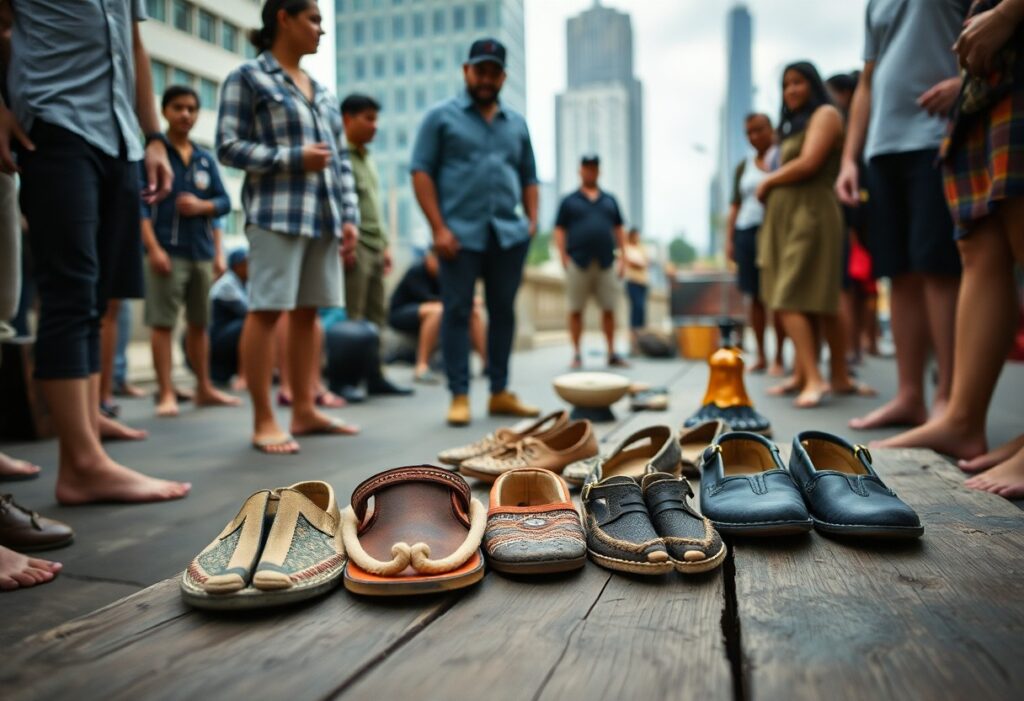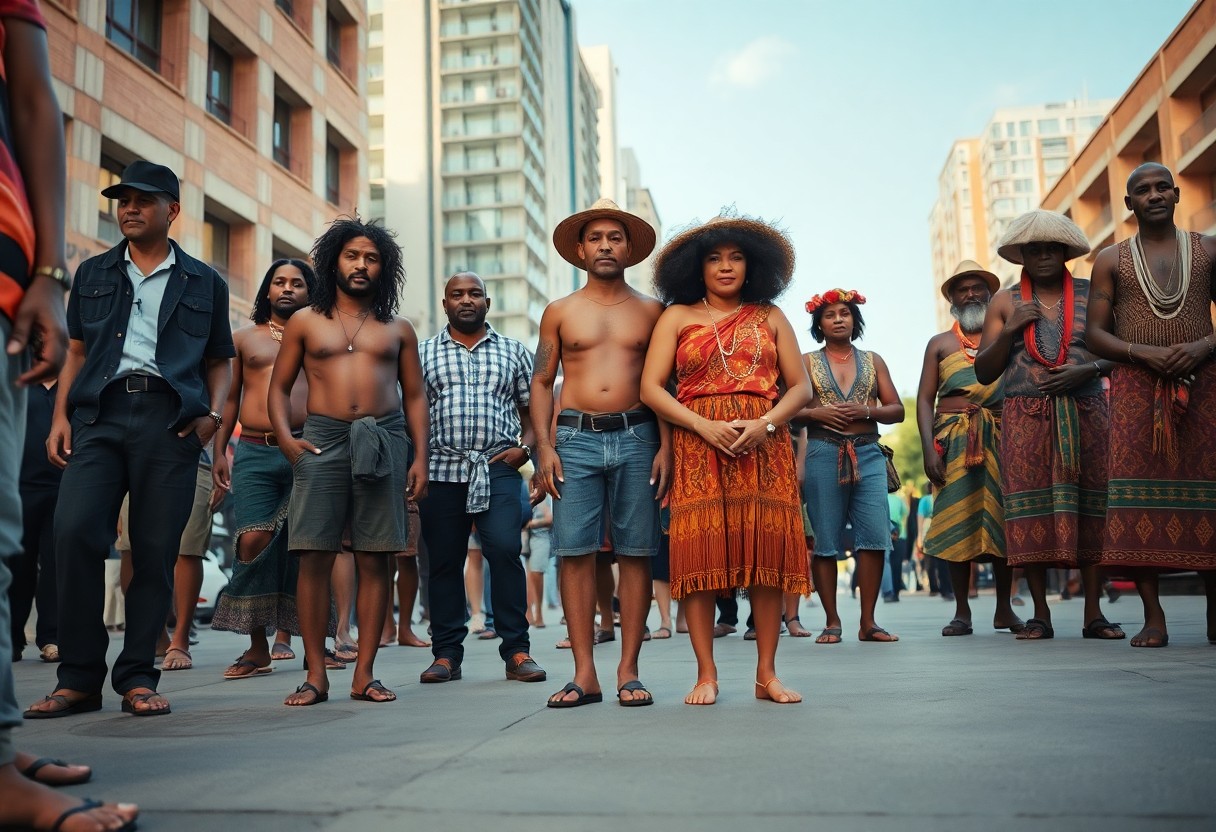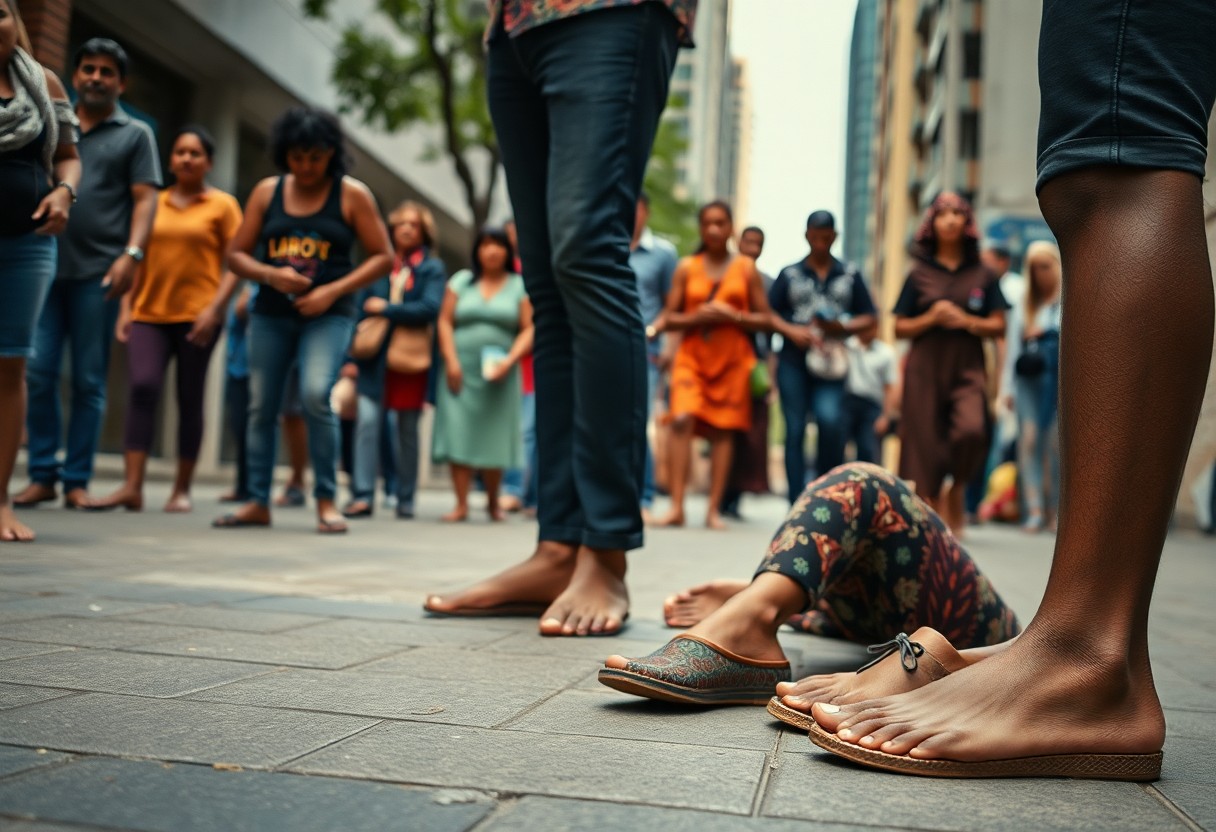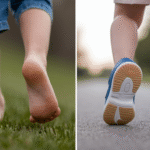
Delving into the world of barefoot footwear through the perspective of cultural anthropology reveals fascinating stories that link the deep-rooted traditions of Aboriginal cultures with the contemporary urban experience. As you explore this captivating transformation, you will discover how cultural beliefs and practices surrounding minimalist footwear influence our understanding of comfort, our relationship with the earth, and our means of personal expression. Engaging with these themes not only broadens your comprehension but also encourages a re-evaluation of how your choice of footwear can reflect deeper cultural significance and personal identity.

Bridging the Gap Between Ancient Footwear Traditions and Modern Innovations
The contemporary footwear market is a rich tapestry that intertwines ancient customs with cutting-edge innovations, fostering a growing appreciation for barefoot footwear. This journey not only pays tribute to traditional indigenous techniques but also adapts these practices to resonate with your modern lifestyle. By recognising the significance of historical practices, you can uncover an exciting fusion of cultural respect and practical aesthetics in your everyday footwear choices, thereby enriching your personal style while paying homage to the past.
Evaluating Indigenous Foot Conditioning Techniques Against Modern Practices
Across the globe, indigenous cultures have employed specific conditioning techniques to fortify their feet for various terrains. Techniques such as walking barefoot over an array of surfaces have strengthened the arches and muscles in ways that many contemporary methods often fail to emulate. In today's landscape, while you may come across minimalist footwear designed to replicate these effects, they seldom provide the authentic experience of genuine contact with the earth, which is crucial for fostering natural foot strength and flexibility.
The Evolution of Military Footwear: From Ancient Caligae to Modern Tactical Boots
The narrative of military footwear is an enthralling chronicle of adaptation and innovation, evolving from the robust Roman caligae, engineered for durability and traction, to today's tactical boots that blend protection with agility and comfort. An analysis of these changes highlights a consistent principle: in challenging environments, functionality reigns supreme, necessitating gear that enhances endurance and mobility for soldiers.
The Roman caligae embodied a sophisticated response to military demands, crafted from sturdy leather with an open-toe design for ventilation. This ancient footwear featured thick soles that effectively absorbed shock and delivered essential traction, vital in combat situations. Fast forward to the present, and tactical boots are now constructed using advanced materials like Kevlar and waterproof membranes to elevate durability and performance. These contemporary designs incorporate padded collars and state-of-the-art cushioning systems to reduce injuries during demanding military operations. By appreciating the legacy of military footwear, you can clearly observe how these historical styles have paved the way for modern innovations, combining heritage, practicality, and cutting-edge technology to meet the needs of today’s warriors.

Examining the Footwear Divide: Urban vs Rural Preferences
The distinctions in footwear preferences between urban and rural settings reveal significant cultural and practical differences. Urban environments frequently prioritise style and brand identity, while rural areas may focus on practicality and durability. As barefoot footwear gains traction, urban dwellers are increasingly adopting its minimalist design as both a fashion statement and a pathway to perceived health benefits. Conversely, individuals in rural regions may exhibit scepticism, influenced by traditional norms and the practical demands of their surroundings.
Identifying Urban Trends in the Acceptance of Barefoot Footwear
In metropolitan regions, a noticeable trend towards the acceptance of barefoot footwear is emerging, with adoption rates steadily climbing over the past decade. This shift is prompted by various factors, including a heightened awareness of health, a growing interest in natural movement, and the impact of fitness trends such as yoga and running. Surveys indicate that approximately 35% of urban residents have actively sought out barefoot-style shoes, signalling a cultural transition towards embracing innovative body mechanics.
Understanding Gender Dynamics in Barefoot Footwear Adoption: Who's Leading the Movement?
Gender dynamics play a crucial role in the acceptance of barefoot footwear, with distinct motivations influencing the choices of men and women. Women often face greater societal pressures related to fashion and aesthetics, which may impede their willingness to adopt minimalist styles. In contrast, men may be more motivated by the performance and health benefits associated with these shoes, resulting in higher adoption rates within male demographics.
Further exploration into the gendered aspects of barefoot footwear adoption reveals that societal expectations greatly influence women's decisions. Women frequently navigate a landscape where ideals of beauty and fashion overshadow practical health considerations. For instance, research shows that approximately 45% of men in urban areas are inclined towards barefoot shoes, compared to only 30% of women. Female consumers often grapple with balancing form and function, making them more cautious as they assess the aesthetics of barefoot footwear alongside their need for comfort and support. By empowering women through targeted awareness initiatives and showcasing stylish barefoot options, the willingness to adopt this trend could increase, potentially reshaping urban footwear narratives and promoting inclusivity across genders.

Revolutionary Innovations Shaping the Future of Barefoot Footwear
As the demand for barefoot footwear continues to escalate, groundbreaking technologies are set to redefine your approach to comfort and performance. Advances in materials science and personalised fitting techniques will not only elevate functionality but also customise your walking experience, seamlessly blending traditional wisdom with contemporary design principles. You are entering a new era where your footwear becomes as distinctive as the journey it accompanies, leading to improved comfort and performance.
Personalised Fit Through 3D Scanning: Achieving the Ideal Shoe
The emergence of 3D scanning technology is transforming the customisation of barefoot footwear, allowing for a precise fit that adapts to your unique foot shape. Rather than accepting standard sizes, your shoes can be expertly crafted to align with the contours of your feet, significantly enhancing comfort and minimising the risk of injury. Custom-fit options will not only improve your walking experience but also make barefoot shoes more accessible to individuals with diverse foot shapes and sizes.
Integrating Smart Sensors: The Cutting-Edge of Footwear Technology
The incorporation of smart sensors into barefoot footwear is on the verge of revolutionising the industry by embedding technology directly into the soles. These innovative features can track various metrics, from distance travelled to foot pressure, providing you with valuable insights to optimise your walking or running routines. With real-time data at your fingertips, you can adjust your activities to enhance performance and ensure safety.
Imagine having access to instantaneous analytics while you walk or run. Smart sensors can monitor your gait, alerting you to any irregularities that could lead to injury. Some forward-thinking brands are already developing footwear capable of analysing your foot's impact on various terrains, offering personalised suggestions for style or cushioning modifications on the fly. This state-of-the-art integration merges smart technology with the traditional barefoot philosophy, ensuring that you maintain a natural stride while harnessing the latest advances in wearable tech. The possibilities for enhancing sports performance, rehabilitation, and everyday comfort are boundless, fundamentally redefining how you engage with your environment with each step.
Reflecting on the Evolution of Barefoot Footwear
Your journey through the cultural anthropology related to barefoot footwear reveals a rich narrative woven from the threads of Aboriginal traditions to contemporary urban practices. By embracing the principles of natural movement and a connection to the earth, you gain insights into how this footwear philosophy transcends mere fashion, deeply influencing lifestyle choices and community values. As you contemplate these diverse viewpoints, consider how your footwear selections can embody and promote a profound understanding of cultural heritage and adaptability in the modern world.
The Article Cultural Anthropology of Barefoot Footwear: From Aboriginal Traditions to Modern Urban Adoption appeared first on My Shoes Finder
The Article Cultural Anthropology of Barefoot Footwear: Traditions to Today Was Found On https://limitsofstrategy.com







